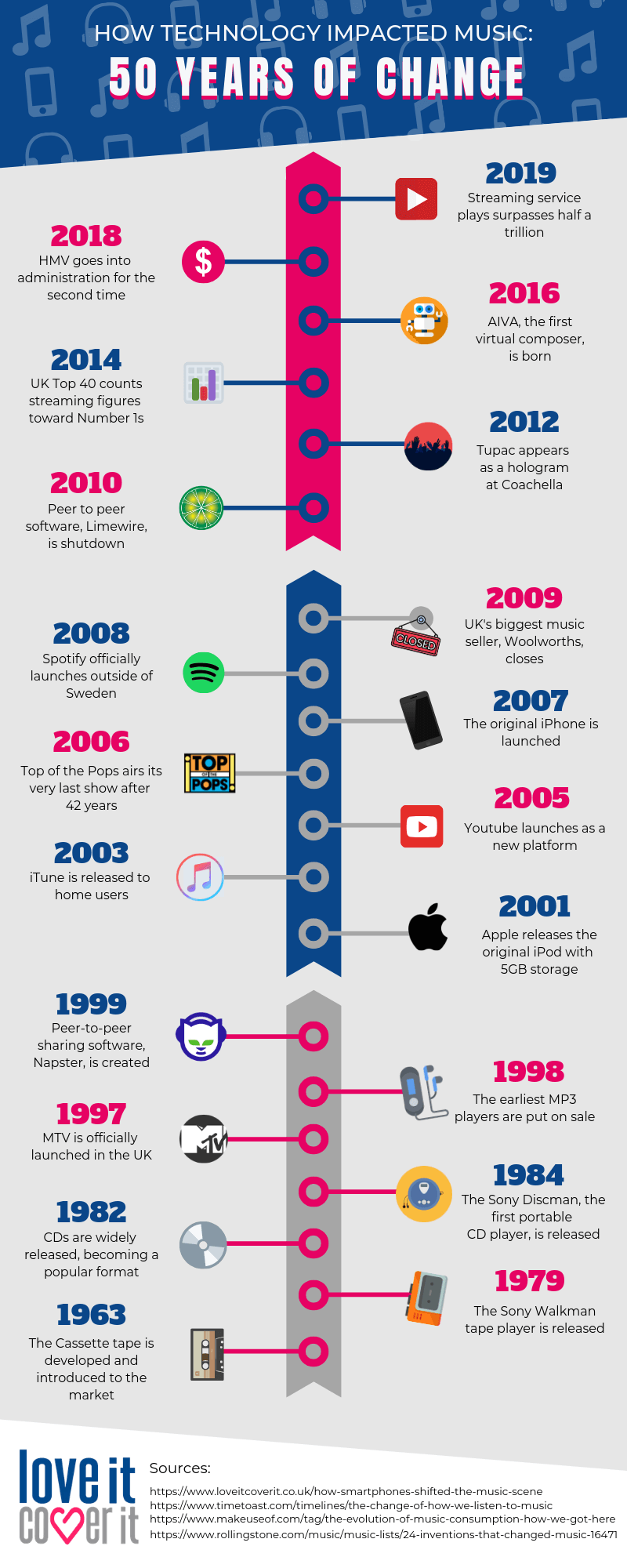Whilst the evolution of music streaming has been wholly beneficial for consumers, it has had some negative impacts on the wider industry. The most often discussed aspect of the rise of streaming is the detrimental effect that it’s had on the sales of traditional music platforms. For instance, between 2009 and 2018, sales of CDs in the UK dropped by over 87 million – from 119.4 million to 32 million. While this follows the same industry trend of the previous decades – CDs replaced tapes, tapes replaced vinyl etc – it should also be noted that traditional downloads are also on the decline, leaving streaming platforms with a near-monopoly on the way people consume modern music.
As a result of the scaled-back use of CDs (and other music formats) there has been a significant impact on businesses and the small economy that relies on CD sales to thrive. One of the most prescient examples of this is the gradual decline of HMV. Once a high-street behemoth that built its brand on being the go-to place for music, the company has posted profit declines in the past few years, with a total revenue dip of 7.8% in December 2017. Similarly, in 2018 it was revealed that supermarket retailers would be ‘significantly’ reducing the amount of shelf space they carry for CDs and records, further demonstrating the decline of physical copies of music.
However, this decline hasn’t just affected massive corporations with other revenue streams. Plenty of small businesses have also suffered. Between 2000 and 2009 the number of independent record shops fell from 700 to 296 – a total loss of 404 across the UK. Furthermore, the shift away from CDs and digital downloads, towards streaming platforms, has also had a negative impact on certain genres of music. Thomas Steffens, CEO of Primephonic, a streaming service dedicated to classical music, says, “Classical music is suffering from declining availability of CDs, download stores and radio channels, whereas, opposed to most other music genres, it is not benefiting from the streaming revolution.” According to Steffens, this is primarily due to the lack of support offered to certain genres from big streaming platforms – with limited libraries, sub-par search tools and recommendations, and mediocre audio quality which can be essential to the classical listening experience.
Another side effect of increased streaming is the impact it has on artists. This was, quite famously, brought into the public spotlight by Taylor Swift in 2014 when she decided to pull her albums from Spotify, before moving to Tidal and Apple Music. The main crux of her issue was that the free ad-supported version of the streaming platform did not fairly compensate the artists involved. According to Swift’s label, her entire discography had only earned $500,000 in 12 months through Spotify, far less than she would have received from traditional sales. While a high-profile example that doesn’t fairly demonstrate the experiences of less influential artists on the platforms, this shows how streaming can have a negative impact on artists. However, in a paid model, there is more compensation given to artists for their work. Some of these concerns are echoed by Joshua Arnold, who says that with so much competition for exposure it’s, “not enough to be a good musician anymore– you need the right ears at the right time to hear you music.” He also insists that while the technology is there for artists to upload and profit from their music, free from labels and management, it also creates extra responsibilities that some artists aren’t equipped to deal with. He states, “I’ve worked with some amazing artists who didn’t gain any traction just because their social media wasn’t good enough.”
Antonio Peluso, a founding member of Jellyfish & The Milkmen, insists that the band’s experience with streaming services has only ever been positive and has even helped them grow their following. He said, “We use all the streaming services primarily because no one is buying physical albums anymore; smartphones give people the chance to access thousands of hours of music with one click, which can’t be done with physical albums. For a smaller act like Jellyfish & The Milkmen, we’re able to distribute to everyone in next to no time. Not only does this helped us reach a new audience, but it’s also helped us secure some more bookings.”
